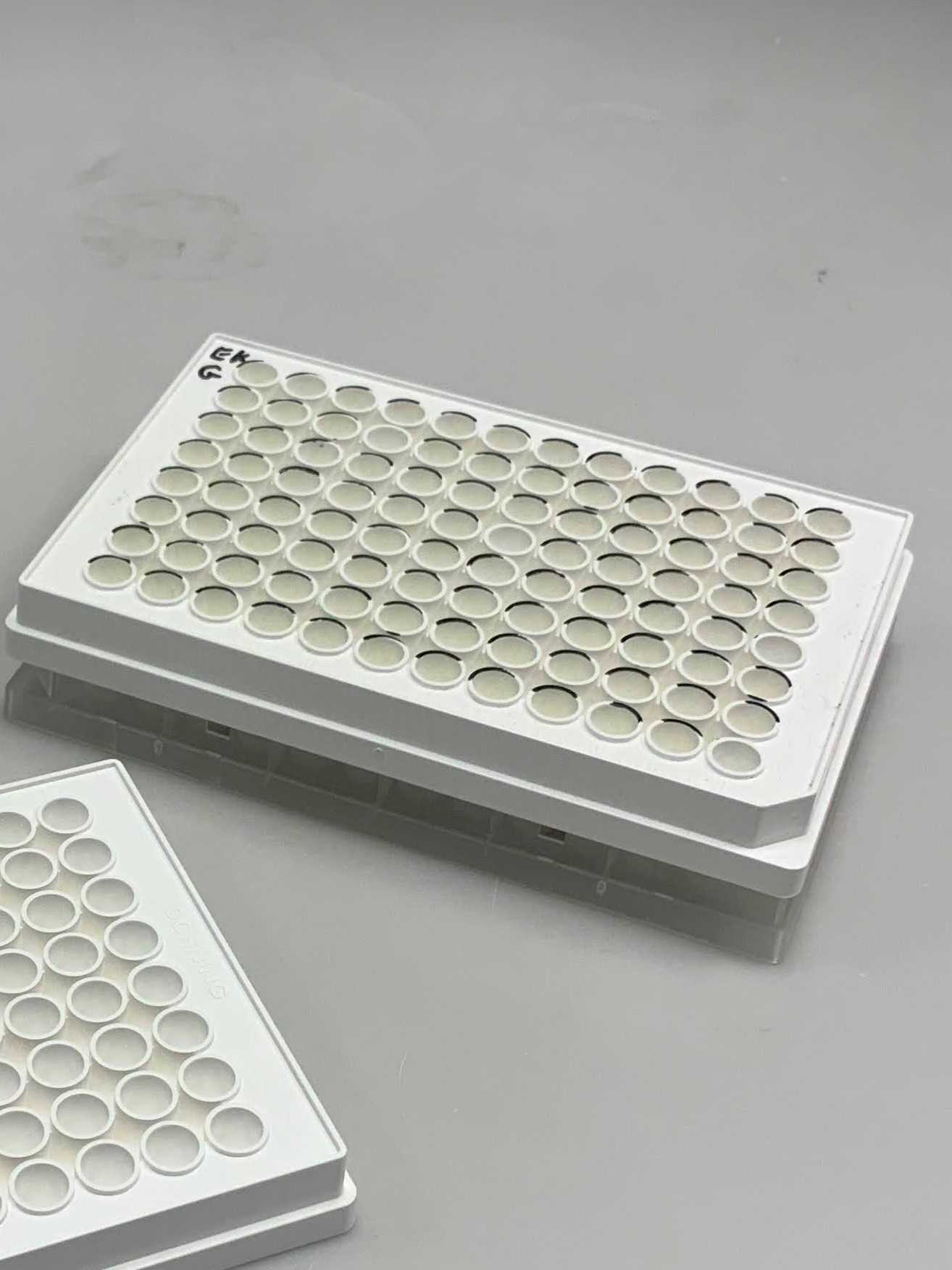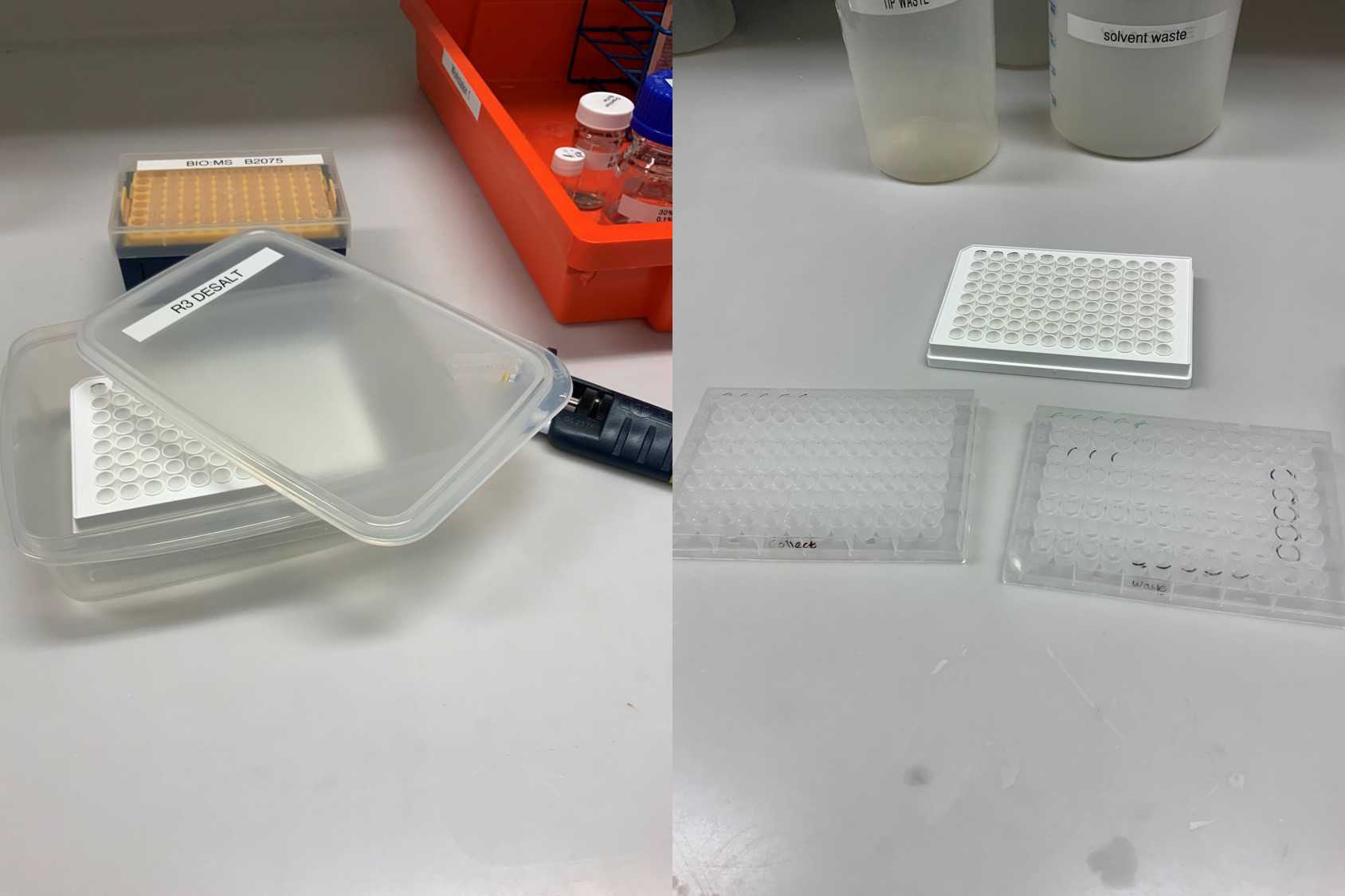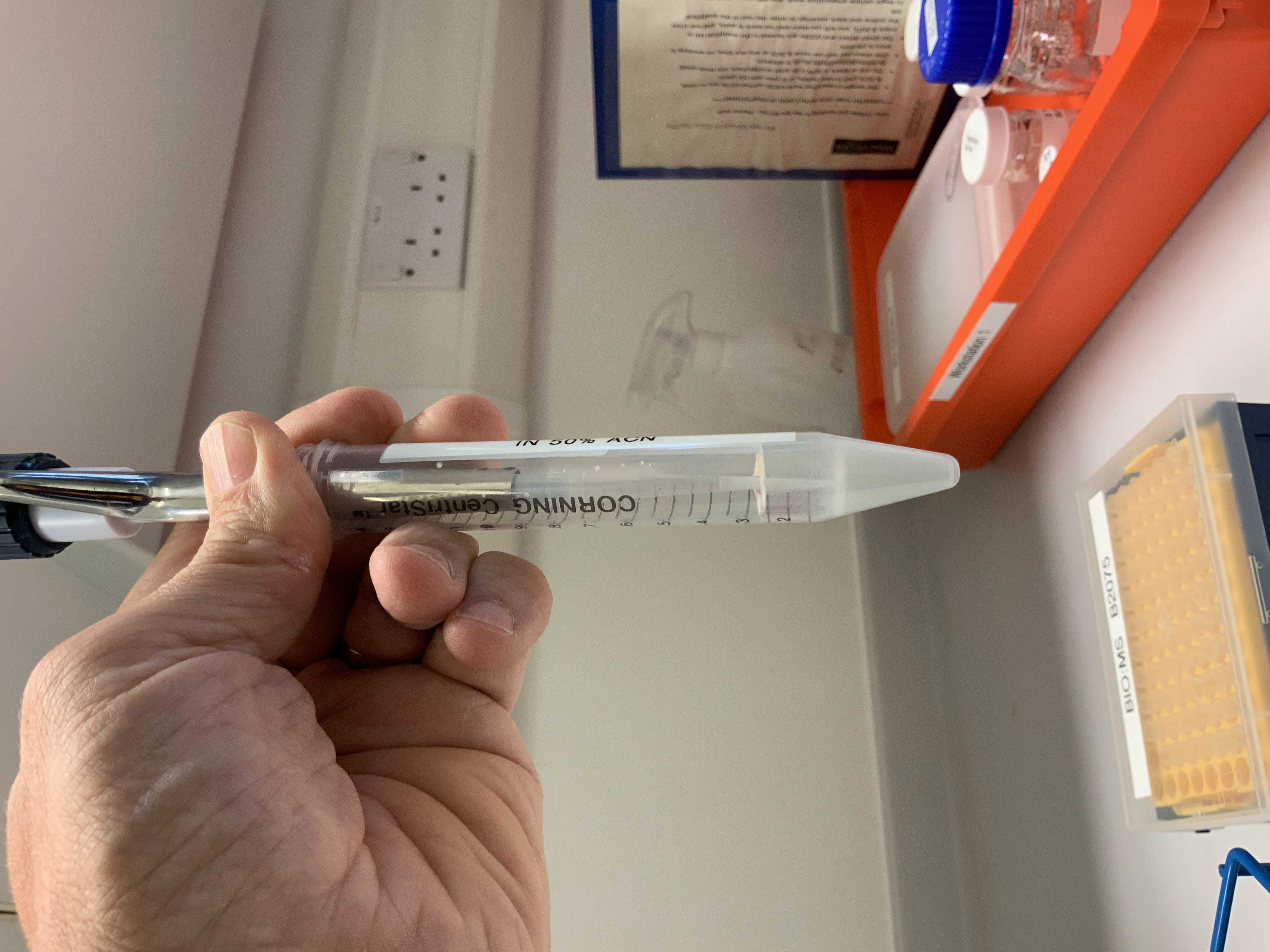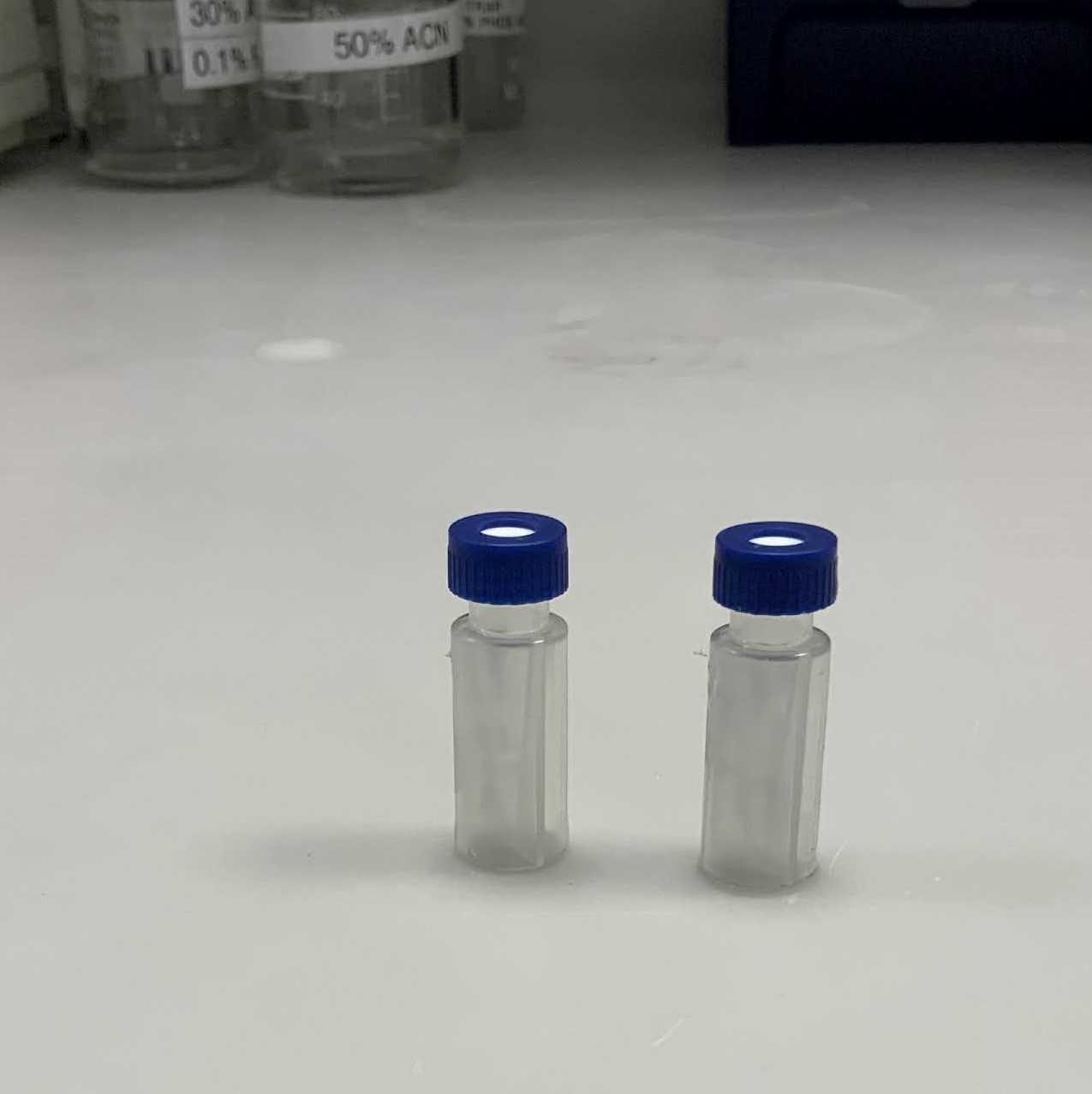96-well plate R3 desalt and clean up protocol for mass spec analysis
ronan o'cualain, Stacey Warwood, David Knight, Emmakeevill
R3 desalt
96-well plate
Mass spec analysis
proteomics
plate-based
automation
automatable
beads
peptide desalting
reverse phase
desalting
clean-up
LC-MS
off-line
offline
Abstract
This protocol details the procedure of 96-well plate R3 desalt and clean up protocol for mass spec analysis.
Before start
Locate the following buffers and reagents:
| A | B |
|---|---|
| Location | Buffer/reagent |
| Bench | 0.1% formic acid in water 50% acetonitrile 0.1% formic acid in 30% acetonitrile Oligo R3 beads in 50% acetonitrile |
Locate the following consumables:
- 2x Corning FiltrEX desalt filter plates (one to use and one as a balance in the centrifuge)
- 2x fresh ABgene storage/collection plates
- Tubes for collecting unbound material (you can reuse sample tubes if desired)
- Mass spec sample vials and caps (blue for samples, red for a pooled sample).
Identify the following equipment that you will use:
10µLor20µLpipette1mLpipette- Thermo Megafuge 16 with plate rotor fitted
- Eppendorf Thermomixer
- Vacuum centrifuge
Attachments
Steps
Preparing plates
With a pen, carefully mark on the side of the outside position of the wells, the positions/wells you will be using for desalting. If desalting 8 peptide samples, mark the side of the well for 8 positions. It is recommended you work down the side of the plate, from A to H, on a new row. The purpose of marking the wells that you are using means that it should make it easier for you to track which wells you have used.

Add 10µL of the prepared POROS R3 (from the settled beads) to the appropriate number of unused wells the filter plate. If the slurry bed has been disturbed, simply add 20µL of the bead suspension to each well
Place the Corning FiltrEX plate with the R3 beads combination on top of the "Wash/waste" plate.
Add 200µL of 50% acetonitrile to each sample well to be desalted, and centrifuge at 200x g,0h 0m 0s for 0h 1m 0s.
Add 200µL of 0.1% formic acid in water to each sample well to be desalted, and centrifuge at 200x g,0h 0m 0s for 0h 1m 0s.
Add 200µL of 0.1% formic acid in water to each sample well to be desalted, and centrifuge at 200x g,0h 0m 0s for 0h 1m 0s.
Load sample and wash beads
Add a maximum of 200µL of the samples to the plate and beads. Incubate samples on the plate mixer for 0h 5m 0s at 500rpm,0h 0m 0s with no heating .
#尊敬的用户,由于网络监管政策的限制,部分内容暂时无法在本网站直接浏览。我们已经为您准备了相关原始数据和链接,感谢您的理解与支持。
<iframe width="560" height="315" src="https://www.youtube.com/embed/Ru5rA-asJKk" title="YouTube video player" frameborder="0" allow="accelerometer; autoplay; clipboard-write; encrypted-media; gyroscope; picture-in-picture" allowfullscreen></iframe>
Remove liquid by centrifugation at 200x g,0h 0m 0s for 0h 1m 0s.
If there is additional sample to be desalted (assuming initial sample volume was > 200µL), repeat the previous step.
Wash 1: Add 200µL of0.1% (v/v) formic acid , mix for 0h 2m 0s at 500rpm,0h 0m 0s,
and then centrifuge at 200x g,0h 0m 0s for 0h 1m 0s. Combine wash with flow through sample if collecting unbound material.
Wash 2: Repeat the previous step by adding 200µL of 0.1% (v/v) formic acid , mix for 0h 2m 0s at 500rpm,0h 0m 0s,
and then centrifuge at 200x g,0h 0m 0s for 0h 1m 0s. Combine wash with flow through sample if collecting unbound material.
Elute peptides
Change the plate below the Corning FiltrEX plate from the "wash/waste plate" to the collection plate.
Elution 1: Add 50µL of 0.1% formic acid in 30% acetonitrile, mix for 0h 2m 0s, 500rpm,0h 0m 0s,
and then centrifuge at 200x g,0h 0m 0s for 0h 1m 0s.
Elution 2: Repeat the previous step.
Add 50µL of 0.1% formic acid in 30% acetonitrile, mix for 0h 2m 0s, 500rpm,0h 0m 0s, centrifuge at 200x g,0h 0m 0s for 0h 1m 0s.
The combined elution volumes should be approximately 100µL. Transfer the combined elution to new sample vials. Label the vials with your initials, and the sample number (it is not essential to record ALL experiment information on the vial, keep this important information elsewhere.
Dry samples to completeness in a vacuum centrifuge.
If you do not have access to a vacuum centrifuge, the peptides will be stable for overnight at 4°CAny longer than this, and unwanted side chain modifications may occur due to the presence of high acetonitrile.




